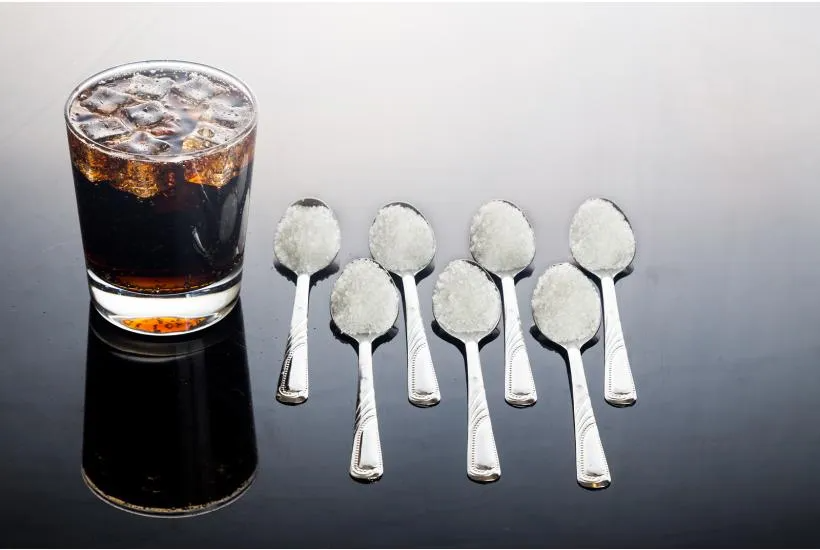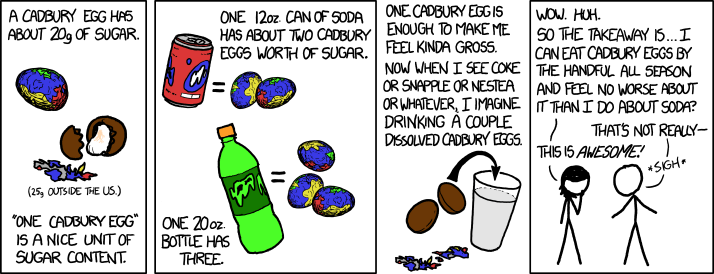Improve Your Diet By Better Estimating Sugar Intake

Over the next year or two, you may begin to see updated Nutrition Facts labels on foods. One key element that the FDA has decided to focus on is a daily value for "added sugars." The updated FDA guideline advises that people consume no more than 10% of total daily calories from added sugars (which would be just 200 calories in a 2,000 calorie daily diet). The FDA does not establish a direct link to obesity from added sugars, but believes there is adequate evidence that the average US populations consumes an excess amount of calories from them compared to the recommended daily caloric intake guidelines.
When you have a chocolate cookie or a soda, it is pretty clear that there is a lot of added sugar in it. The problem, however, is that numbers like "15g of sugar" on a nutrition label can be hard to make a quick determination just how much you're eating. By using visualization, you can better turn serving sizes or grams into something that you can more readily understand, and then make a decision that is best for your health on how much - or if - you should consume a food or drink.
Fill Up An Imaginary Bowl
One easy way to mentally visualize how much sugar is in a food is to use a method recommended by nutritionist Andy Bellatti. In the video above, he describes a simple way to look at the listed amount of sugar and then divide by four. when you do this, you can figure out how many small spoonfuls (teaspoons) of sugar you are actually getting. Then, picture yourself dumping each one of those into a bowl. Odds are, you will think twice about ingesting the entire serving.
A regular soda's sugar content is a good example of how this can help. Take a 12-ounce can and you will found almost 36 grams of sugar on the label. Divide that by four and you'll get 9 spoonfuls(!) of sugar. When you think about the ideal daily sugar intake limit of less than 40 grams per day, this can really change your mental equation.
Cadbury Eggs and Skittles
If the visualization of a spoonful isn't quite specific enough to help you visualize your daily sugar intake, try thinking about sugary candies like Skittles and Cadbury eggs. With 20g of sugar, the Cadbury egg is a good comparative unit to measure sugar content, as you can easily picture how you feel after eating several of them!

from xkcd.com
You can do this comparison with other popular snack candies. For example, a 20 ounce bottle of soda is equal to 3 Cadbury eggs or a large snickers bar. If you really want to give yourself pause and make your stomach a little unsettled, add up the amounts of things like soda that you consume in a week and assess, like in the comic below. One soda per day for a week is like drinking a bottle of straight cake frosting!

from xcd.com
Watch Out for the Sugar Heavy Hitters
In the end, the average American is eating far too much added sugar, since it has no nutritional value and is considered empty calories. The American Heart Association's recommendation puts 70% of Americans at eating at least 22 teaspoons of added sugar daily, which is not quite 4x the recommended amount.
If you find it difficult to look at every single thing you're eating and determine if you're exceeding the recommended amount, another approach is to watch out for "sugar bombs" that can max out your daily suggested allowance in just one meal. Check out this article on Daily Burn to see more info on these foods, and use the infographic below to help.